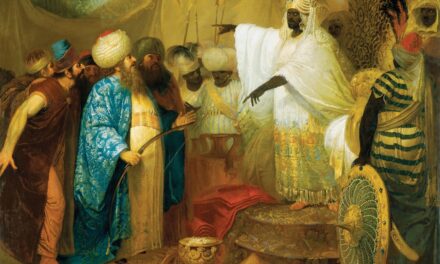Vincent van Gogh was born on 30 March 1853 in Groot-Zundert, Netherlands. He was the eldest of six children born to Theodorus van Gogh, a minister of the Dutch Reformed Church, and Anna Cornelia Carbentus. Van Gogh’s early life was characterised by adversity and personal challenges.
Although his family was middle-class, they experienced financial difficulties, and Vincent often felt alienated. He grappled with mental health issues from a young age and had a complex relationship with his family. Despite these obstacles, van Gogh demonstrated an early interest in art and began drawing as a child.
Van Gogh’s early adulthood was marked by a series of career changes and personal difficulties. He worked as an art dealer, a teacher and a preacher before ultimately deciding to pursue a career as an artist. His decision to become an artist was met with opposition from his family, who did not support his choice.
Nevertheless, van Gogh moved to Brussels in 1880 to study art at the Royal Academy of Fine Arts. This marked the beginning of his artistic journey, which would ultimately lead to his recognition as one of the most influential artists in history.
Summary
- Van Gogh was born in the Netherlands in 1853 and had a troubled childhood, which greatly influenced his later work.
- His artistic style was characterised by bold colours, expressive brushwork, and a focus on capturing emotion and movement.
- Van Gogh’s most famous works include “Starry Night” and “Sunflowers,” and his legacy continues to inspire artists and art lovers around the world.
- The artist struggled with mental health issues throughout his life, leading to periods of intense creativity and deep despair.
- Van Gogh had close relationships with fellow artists such as Paul Gauguin and was influenced by movements like Impressionism and Post-Impressionism.
Artistic Style and Influences
Influences of Impressionism
Van Gogh’s artistic style was heavily influenced by the works of the impressionists, particularly their use of light and colour.
Eastern Inspiration
He was also inspired by Japanese prints, which had a significant impact on his use of line and composition.
Nature and Emotion
One of the most significant influences on van Gogh’s work was the natural world. He was captivated by the beauty of the countryside and often painted landscapes and scenes of rural life. Van Gogh’s use of colour was also influenced by his emotional state, and he used it to convey his inner turmoil and passion. His use of bold, contrasting colours and dynamic brushwork set him apart from his contemporaries and established him as a groundbreaking artist.
Famous Works and Legacy
Vincent van Gogh’s body of work includes some of the most iconic paintings in art history. His most famous works include “The Starry Night,” “Sunflowers,” “Irises,” and “The Bedroom.” These paintings are celebrated for their emotional intensity, bold use of colour, and expressive brushwork. Van Gogh’s work has had a lasting impact on the art world and continues to inspire artists and art lovers around the world.
Van Gogh’s legacy extends beyond his paintings to his influence on future generations of artists. His expressive style and emotional depth paved the way for the development of modern art movements such as expressionism and fauvism. His work has also been the subject of numerous exhibitions and retrospectives, cementing his status as one of the most important artists of all time.
Mental Health and Personal Struggles
Throughout his life, Vincent van Gogh struggled with mental health issues that had a profound impact on his work and personal life. He experienced periods of severe depression, anxiety, and psychosis, which led to erratic behaviour and strained relationships with those around him. Van Gogh’s mental health struggles were exacerbated by his tumultuous personal life, including failed romantic relationships and financial difficulties.
Despite these challenges, van Gogh continued to create art as a way of coping with his inner turmoil. His paintings often reflected his emotional state, with intense colours and bold brushwork conveying his inner struggles. Van Gogh’s mental health issues ultimately led to his tragic end, but they also played a significant role in shaping his artistic vision and legacy.
Relationship with Other Artists and Art Movements
Vincent van Gogh had complex relationships with other artists and art movements during his lifetime. He was influenced by the work of the impressionists, particularly their use of light and colour, but he also sought to distinguish himself from their style. Van Gogh’s friendship with Paul Gauguin was particularly influential, as they exchanged ideas and techniques during their time living and working together in Arles.
Van Gogh’s work also had a significant impact on future generations of artists, including expressionists such as Edvard Munch and fauvists such as Henri Matisse. His bold use of colour and expressive brushwork inspired new artistic movements and continues to influence artists today.
Impact on the Art World

The Artistic Legacy
Van Gogh’s innovative style paved the way for a plethora of artistic movements, each building upon his pioneering spirit. His bold, vibrant colours and emotive brushstrokes inspired a new wave of artists to experiment with their craft.
Popular Culture Icon
Beyond the art world, Van Gogh’s influence extends to popular culture, where his iconic paintings have been reproduced on everything from posters to coffee mugs. His work continues to captivate new generations of artists and art enthusiasts, solidifying his status as one of the most significant figures in art history.
Enduring Inspiration
Today, Van Gogh’s art remains a powerful source of inspiration, continuing to motivate artists, designers, and art lovers alike. His legacy serves as a testament to the enduring power of art to touch hearts, minds, and souls.
Van Gogh’s Enduring Popularity and Recognition
Vincent van Gogh’s work has remained incredibly popular since his death, with his paintings attracting millions of visitors to museums around the world each year. His iconic status has been further solidified by numerous films, books, and exhibitions dedicated to his life and work. Van Gogh’s enduring popularity is a testament to the universal appeal of his art, which continues to resonate with people from all walks of life.
His ability to convey deep emotion through his paintings has ensured that his legacy will endure for generations to come. Van Gogh’s recognition as one of the greatest artists in history is well-deserved, and his influence will continue to shape the art world for years to come.
If you are interested in learning more about the art movement that influenced Vincent van Gogh, you should check out this article on Impressionism. Impressionism was a key influence on van Gogh’s work, and understanding this artistic style can provide valuable insight into his paintings. The article explores the origins and characteristics of Impressionism, as well as its impact on the art world. It’s a fascinating read for anyone wanting to delve deeper into the world of art history.
FAQs
Who was Vincent van Gogh?
Vincent van Gogh was a Dutch post-impressionist painter who is among the most famous and influential figures in the history of Western art. He is known for his expressive use of bold colours and dramatic, impulsive brushwork.
What are some of Vincent van Gogh’s most famous works?
Some of Vincent van Gogh’s most famous works include “Starry Night”, “Sunflowers”, “The Bedroom”, “Irises”, and “The Potato Eaters”.
What is Vincent van Gogh’s artistic style?
Vincent van Gogh’s artistic style is often described as post-impressionist, characterized by bold colours, dramatic brushwork, and a focus on emotional expression.
What is Vincent van Gogh’s legacy in the art world?
Vincent van Gogh’s legacy in the art world is significant, as he is considered one of the greatest and most influential artists of all time. His work has had a profound impact on the development of modern art.
What is Vincent van Gogh’s tragic life story?
Vincent van Gogh struggled with mental illness throughout his life and tragically died by suicide at the age of 37. Despite his personal struggles, he created a vast body of work that continues to inspire and captivate audiences around the world.




